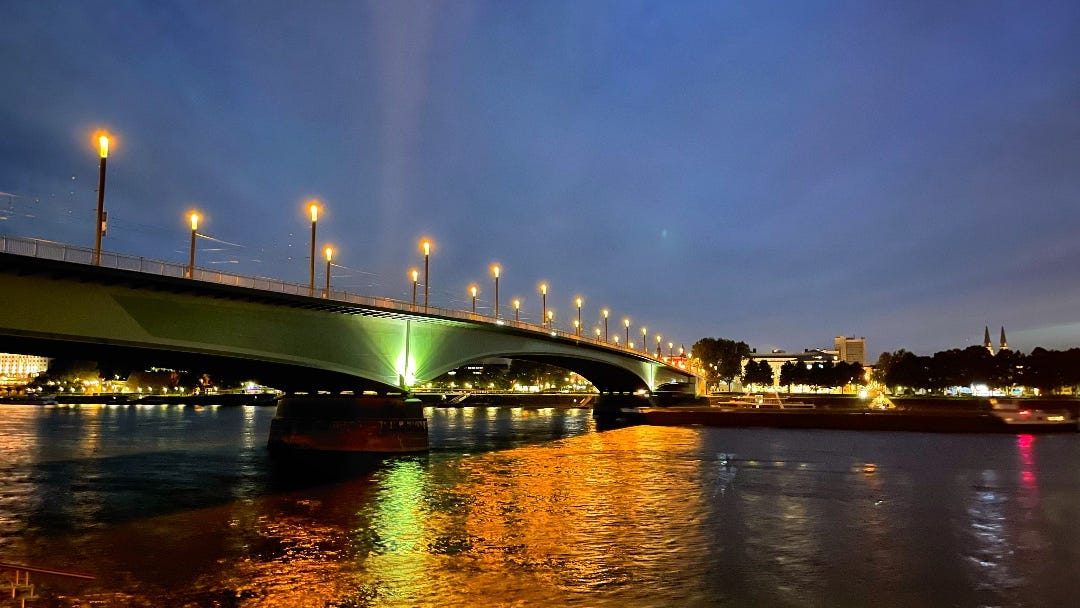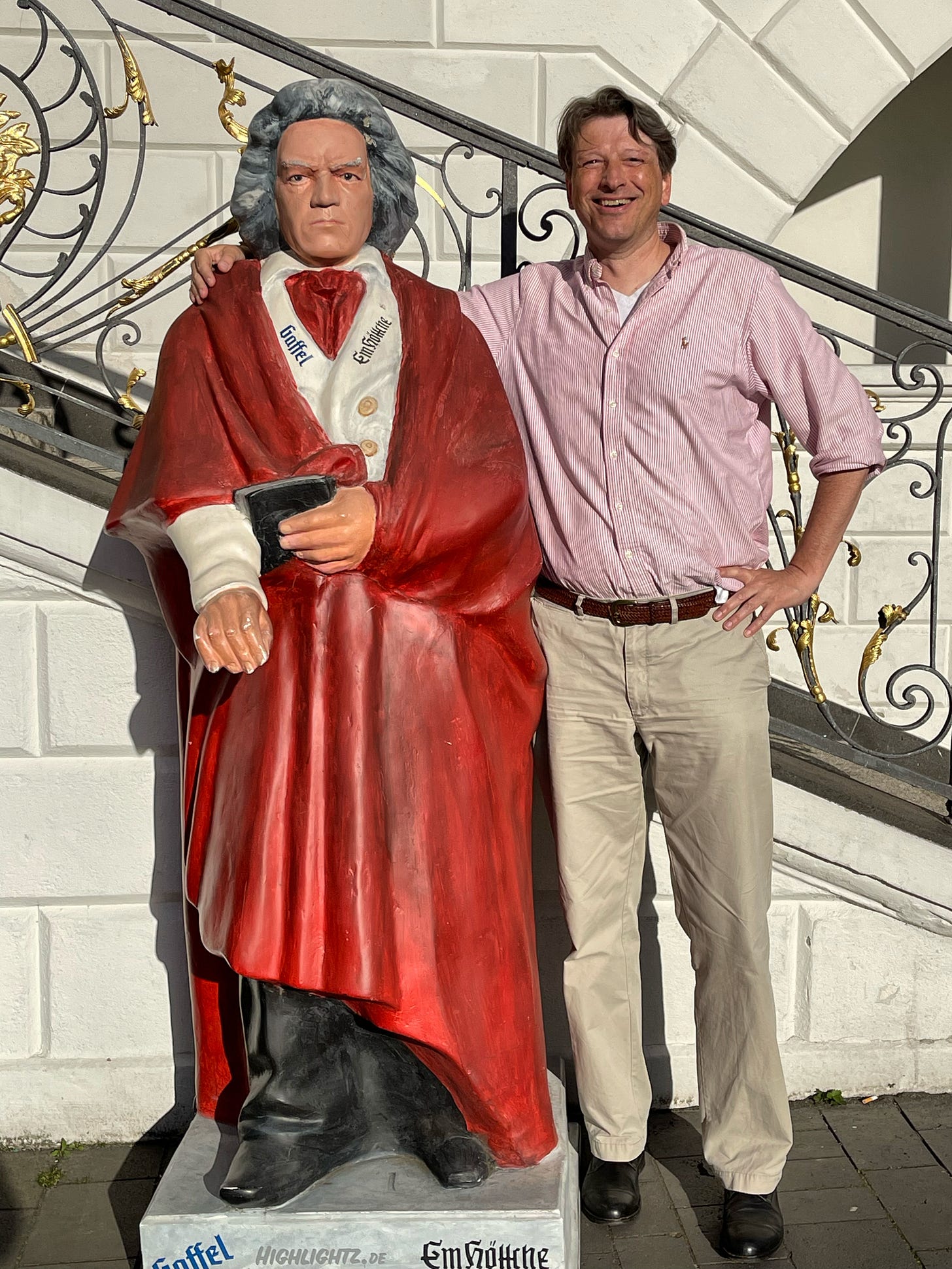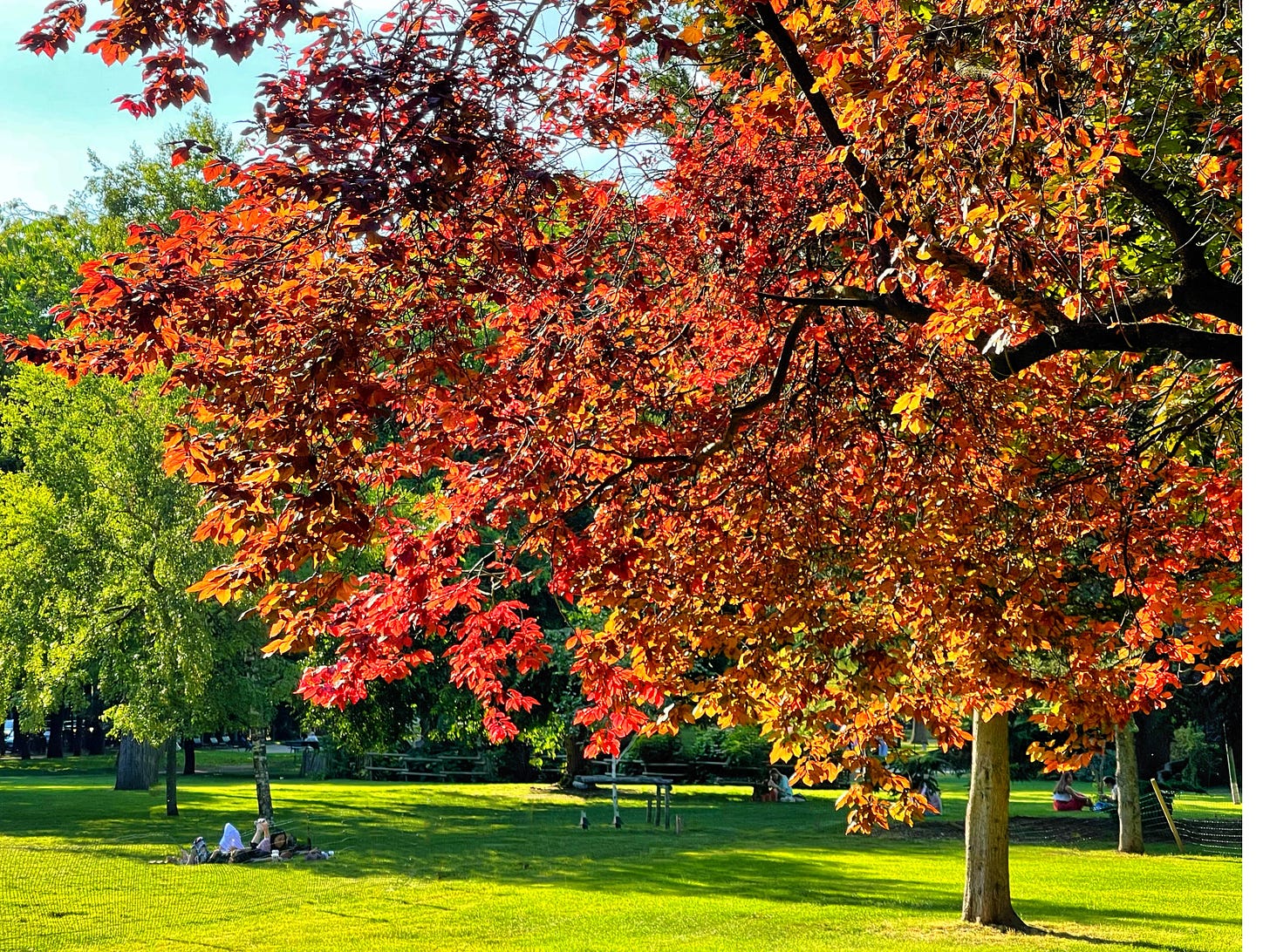I have never written more than just a few lines on my iPhone, but that will change today. I’m traveling with my backpack, and I didn’t want to carry the extra weight of a laptop. I realize that this decision will surely lead to more typing and grammar mistakes; I hope you will forgive me (I’m not a native speaker), less weight to carry is better for my back and shoulders. In August I will have access to my laptop again.
But on the plus-side: I have lots of stories and photos to share. So let’s catch up on last week. Today, a week ago it was Monday June 13. I was in Bonn, Germany, and wrote about that here.
Here is one more picture of Bonn, the bridge over the Rhine river.
The next day I left Bonn, but not before taking a photo with Bonn’s most famous son. Beethoven left Bonn just before his 22nd birthday to study with Haydn in Vienna, where he would live the rest of his life.
And while I type this, considering his brilliant works, suddenly the most classic musical earworm that I know creeps into my mind: the opening notes of Für Elise. I doubt if Ludwig would appreciate it to be remembered by this tune. When he first drafted this short piano piece in 1810, he stuffed it in a drawer. We only have it because a musicologist found it and published it in 1867, forty years after his death. However, he misread Beethoven’s messy handwriting; the piece was labeled "Für Therese" not "Für Elise." Beethoven had fallen in love with Therese, but she married someone else.
After Bonn, I went to Cologne and visited its famous Cathedral. I wrote about it here, and this is another photo from that moment.
From there, I took the train to The Hague, to meet friends and former colleagues in cafe Schlemmer.
The next day, Wednesday June 15, I had changed my suit, tie, and suitcase for my backpack and hiking clothes. I took the train to Paris, where I arrived at Gare du Nord.
In Paris, I visited the museum Marmottan Monet. I will write about it some day, but I will now limit myself to sharing a photo of one of Monet’s famous Cathedral of Rouen series that I saw in the museum.
When my mother, an art historian, introduced me to impressionism, she used these paintings to explain the essence of this movement. The appearance of the Cathedral’s facade changes under the different lighting conditions during the day or in different seasons. In this example from 1892, he studied the light at the end of the day.
Later that afternoon, I walked in the Bois de Boulogne, and looked at the light in this season as Monet would have done. This tree could have been a subject for Monet to paint.
I try to avoid flying (and writing about climate change during this 107-day trip), so the next morning, I took the train to the French Pyrenees. First by the high speed train at 300 kilometers per hour to Bordeaux, and from there by normal intercity to Bayonne, and a slow local train to Saint Jean Pied de Port.
This is not a great video, since there wasn’t much to photograph, but it summarizes my full day of travel.
And that is a long introduction to tell how I arrived in the beautiful little French town of Saint Jean Pied de Port. That was four days ago and that’s where a new chapter in this summer of travel starts: walking the ancient pilgrimage route to Santiago de Compostela. I need a break from my two-thumbs typing and will end now with some pictures of this pretty town.
And this is the part most of you skip: please read this too: if you support this newsletter by taking a subscription, you do not only support me, you support independent writing and make it possible for others to read this for free.
Or perhaps you would like to buy me a coffee?














Sorry to see that it seems Beethoven has not much to smile about at this moment. But you cracked me up with trying to break the mood, with a very generous one (-:
The local town photos are truly inviting. I wish . . . I have this 🧭 in hand. What a trip 🚶♂️🙏
Alex, have a wonderful time on el camino! Every friend who has done it talks about the physical and spiritual experiences that have changed and enriched their lives. Enjoy!